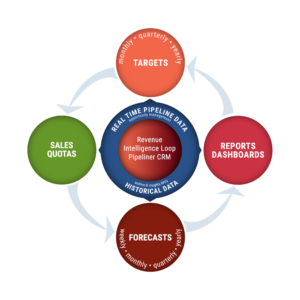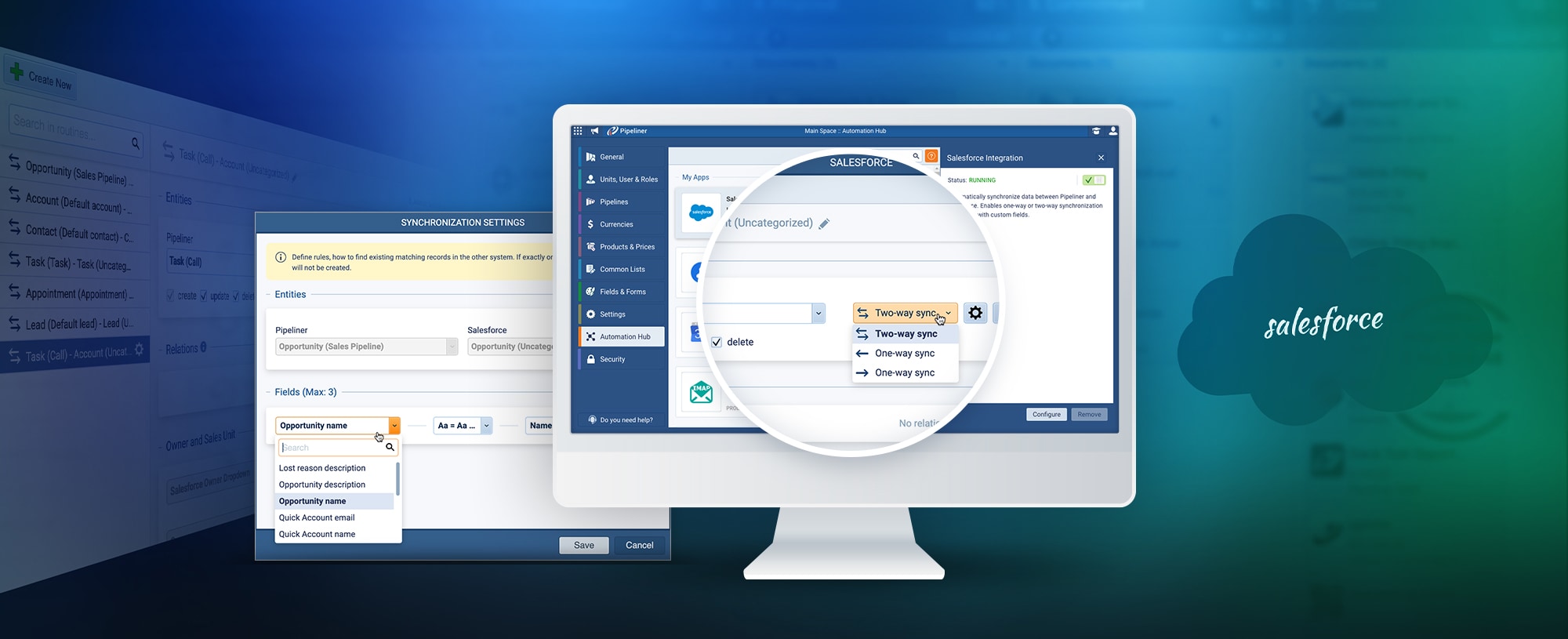Sales forecastingForecasting Forecasting is a prediction or calculation of a trend or event likely to occur in the future based on qualitative, quantitative and historical data as well as emergent but relevant factors. will never be the same—for this month, Pipeliner introduces a groundbreaking approach in forecasting: the Pipeliner RevenueRevenue Revenue is the amount of money a business generates during a specific period such as a year or a quarter; also called sales. Intelligence Loop!

All of us desire to know where we came from, but we also want to know where we’re bound. We’re always engaged in a significant attempt to learn all about “what is next.” An example is, during election times, everyone scrambles to learn about political outcomes. A lighter example is the love everyone has for the motion picture Back to the Future—McFly and the professor are able to return to a time in the past, knowing everything that is going to happen.
Doing Away with Business Uncertainty
For anyone trying to analyze or forecast future events, uncertainty is the primary concern. This is nowhere more evident than in business.
Businesses wonder why competition has become so fierce. It’s because competitors have become increasingly adept at gross revenue prediction. To succeed in this new competitive environment, every company needs to revolutionize its sales function management.
What is the reason prediction is so crucial in a business environment? Because prediction secures company investments and decisions, based on past dataData Data is a set of quantitative and qualitative facts that can be used as reference or inputs for computations, analyses, descriptions, predictions, reasoning and planning.. It is, therefore, crucial that historical data be accurately analyzed. When this isn’t done, a company cannot accurately forecast and predict the future performance of the individual and the team.
It Begins With Historical Data
Analysis of historical data must occur before anything else in a forecast—but a company must possess historical data for this to happen. The more historical data a company has, the more accurate predictions will be.
This is why our Pipeliner CRM solutionSolution Solution is a combination of ideas, strategies, processes, technologies and services that effectively helps an organization achieve its goals or hurdle its challenges. is marketed to businesses with existing data.
In order for data to be analyzed and for any accurate prediction to be made, a good couple of years of historical data is required.
To see how this works in practice, have a look at our graphic above. Starting at the center of the Revenue Intelligence Loop, historical data is accumulated through sales management insights, KPIs and Archive functionality. These dynamic features provide evidence-based predictions . Forecasting is no longer based on wishful thinking; ours is the first CRM in the market to make forecasting so precise.
To gain a full analysis of your operation, historical data must take both leading and lagging indicators into accountAccount Account refers to a record of primary and background information about an individual or corporate customer, including contact data, preferred services, and transactions with your company..Pipeliner fully incorporates leading and lagging indicators, giving you a holistic view.
You can see in the graphic that, to guide a company in meeting its targets and quotas, Pipeliner coordinates historical data and real-time pipelinePipeline Sales pipelineis a visual representation of the stage prospects are in the sales process. data within opportunity management.
Set Goals Using KPIs
Within historical data, a number of different KPIs must be understood so that targets and quotas will be set accurately. For example, you must understand your average deal size. If you are setting a goal of $25 million in revenue, with 30 salespeople and an average deal size of $50,000, you will easily be able to figure out how to achieve the goal.
Other KPIs include sales velocity, performance insights, targets, win rate and forecasting. All of these are contained within Pipeliner CRM.
Target Functionality Expanded
The setting of monthly, quarterly and annual targets is accomplished through historical data, as seen in the graphic. To facilitate this, Pipeliner has greatly expanded its target functionality.
Utilizing this new function, userUser User means a person who uses or consumes a product or a service, usually a digital device or an online service. or group targets can be created. As you’re setting the target, historical data is automatically filled in from KPIs of that individual or group—average deal size, win rate, average velocity, and the rest.
Is your target valid? The target functionality will let you know, based on your historical data. Are there enough opportunities in the pipeline for this target to be made? Is it a realistic target, or unrealistic? From this data, you’ll be able to tell what actions are needed.
You will always be able to track target achievement for each group or individual as you progress through the sales period. This is a powerful tool for management—but it is also a tool with which the individual sales rep can take self-responsibility. They can see they don’t have quite enough to fulfill a target, and take appropriate measures on their own.
Sales Management and Setting of Quotas
QuotaQuota Quota is a predefined benchmark indicating the amount of sales a selling unit such as a sales rep or a regional sales team should achieve within a given period, often used as a measure of success, performance and eligibility for commissions and other rewards. setting also utilizes historical data, as can be seen in the graphic. These are then assigned, depending on the sales structure of the company, to individuals, teams or territories. Pipeliner allows precise setting and assignment of quotas.
At Last…Forecasts
From the point setting of quotas is done, creation of realistic forecasts can occur for the very first time. These forecasts can be adjusted throughout the sales period to always remain accurate.
Reports
Through its dashboard and advanced reporting, Pipeliner empowers sales management.
Precision reporting can be made to company stakeholders, leadership or anyone else who needs or wants them. Now that company leadership can operate with accurate forecasts, these can be provided to investors. Accurate predictions mean everything, especially within larger companies—if a company predicts $35 million in revenue, and only $25 million is made, that’s a loss of $10 million. In today’s economy, even a small percentage of error is unacceptable. A set of solutions such as Pipeliner’s Revenue Intelligence Loop can keep that from happening.
The Revenue Intelligence Loop provides first-ever evidence-based predictions. CRM, for the first time in history, is what it actually should be, and what it was intended to be from its inception. No longer will targets and forecasts be made based on guesswork. We’ve recently seen where lack of data and guesswork have taken us—simply look at the COVID disaster.
Finally do away with wishful thinking!
Start Your Free, No-Obligation 14-Day Pipeliner CRM Cloud Unlimited Trial.





